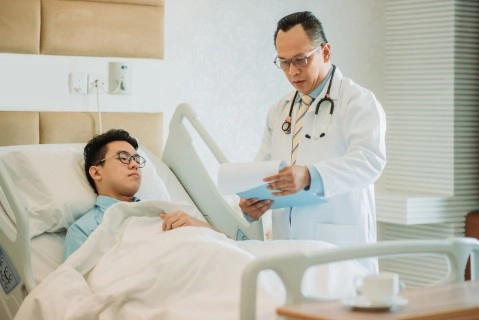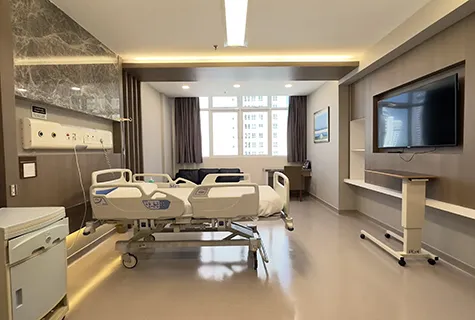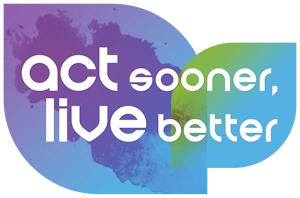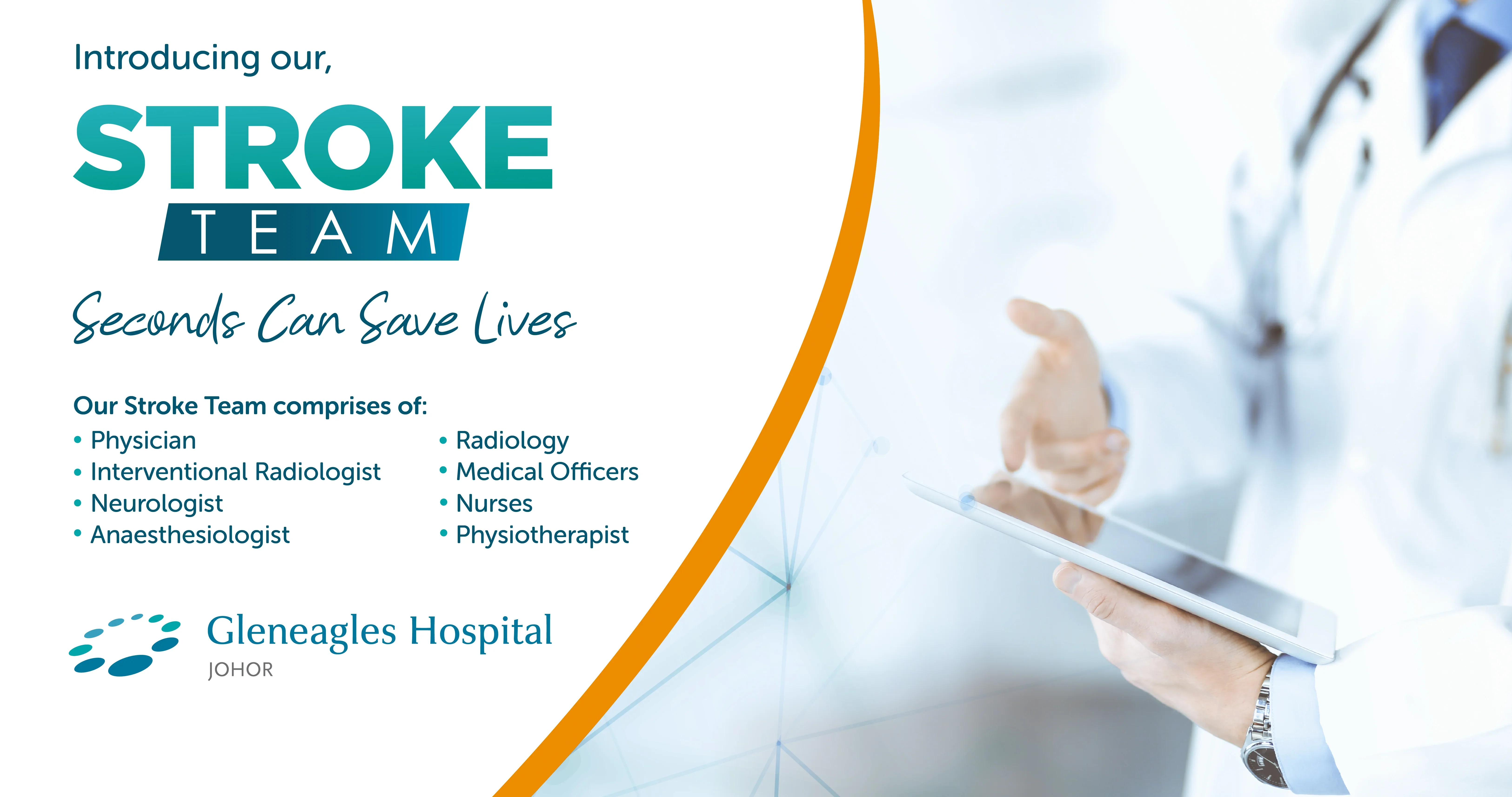
Seconds can save lives
A stroke is a terrifying experience for patients and their families. At Gleneagles Hospital Johor, our Stroke Centre is designed to give you round-the-clock care following a stroke, so that you can have peace of mind and focus on getting better.
Our multi-disciplinary team of experts provides fast, efficient care for patients experiencing symptoms of stroke and personalized ongoing care for patients who have already experienced a stroke or have other risk factors. We will help you every step of the way so that you and your family will be confident in the best possible recovery once you’re back home.
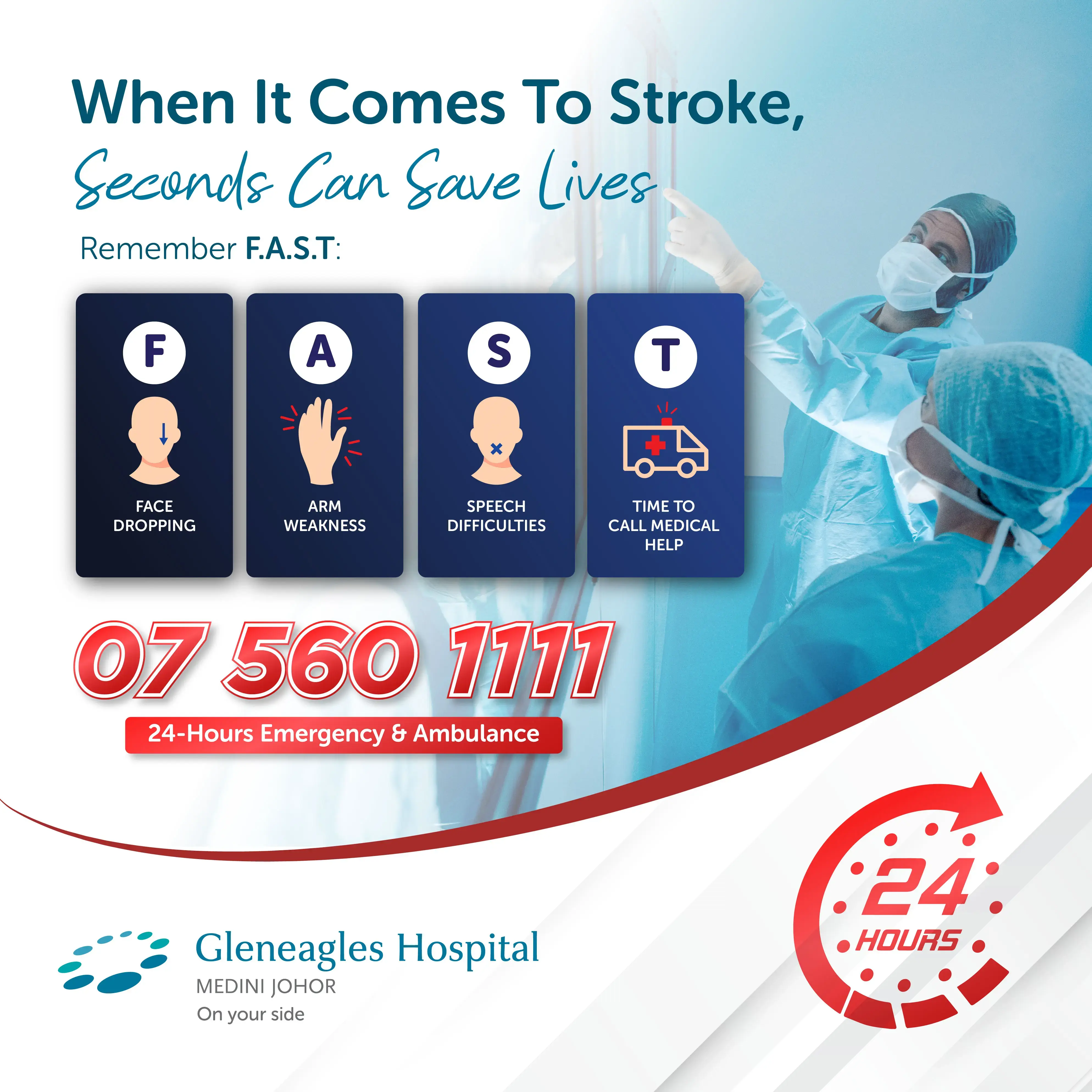
ABOUT OUR STROKE CENTRE
Our state-of-the-art facility is designed for people who need treatment for stroke cases whether it is an emergency or long-term (acute and chronic) care. Patients will benefit from a range of comprehensive medical, surgical, and minimally invasive treatment options, skilled nursing care, and a rehab team. Our multidisciplinary team of doctors and specialists offers you comprehensive treatment plans from the moment you arrive at the hospital, with exceptional emergency medicine doctors, neurologists, neurosurgeons, interventional radiologists, rehabilitation specialists, and stroke care experts working together on your evaluation and treatment.
We work in partnership with our patients and their families to ensure they feel listened to, are involved in their care, and feel confident in their recovery journey. We also provide ongoing care for people once they’ve returned home so that they can keep making progress and live life to the fullest.
At Gleneagles Hospital Johor, your stroke treatment is in the best hands.
SERVICES OFFERED
DAY PROCEDURE UNIT (NEURO-DIAGNOSTIC LABORATORY)
- Electroencephalography (EEG)
Electroencephalography (EEG) is a non-invasive clinical tool frequently used in hospital-based diagnosis and management of seizures but has also been evaluated for stroke identification and prognostication. - Electromyography (EMG)
Electromyography (EMG) is a diagnostic procedure to assess the health of muscles and the nerve cells that control them (motor neurons). EMG results can reveal nerve dysfunction, muscle dysfunction, or problems with nerve-to-muscle signal transmission. After a stroke, clinicians and patients struggle to determine if and when muscle activity and movement will return. Surface electromyography (EMG) provides a non-invasive window into the nervous system that can be used to monitor muscle activity. - Nerve Conduction Study (NCS)
Nerve Conduction Study (NCS) is a measurement of the amount and speed of conduction of an electrical impulse through a nerve. NCS can determine nerve damage and destruction which cause the muscles to react in abnormal ways.
LABORATORY
- Blood Tests
- Complete Blood Count
This includes a check for your level of platelets, which are cells that help clot blood. A lab will also measure electrolyte levels in your blood to see how well your kidneys are working. - Clotting Time
A pair of tests called PT (prothrombin time) and PTT (partial thromboplastin time) can check how quickly your blood clots. If it takes too long, it could be a sign of bleeding problems.
RADIOLOGY
- Computerized Tomography (CT)
X-rays are taken from different angles and put together to show if there's any bleeding in your brain or damage to brain cells. Dye might be injected into your vein first to look for an aneurysm, a thin or weak spot on an artery. - Magnetic Resonance Imaging (MRI)
This uses powerful magnets and radio waves to take a detailed picture of your brain. It's sharper than a CT scan and can show injuries earlier than a traditional CT. - Positron Emission Tomography (PET)
PET scans create images to show how well organs or tissues in the body are functioning or look for the presence of disease. PET imaging is also used to diagnose diseases of the brain such as Alzheimer's disease, Parkinson's disease, Huntington's disease, epilepsy, or stroke. - Carotid Ultrasound
This uses sound waves to find fatty deposits that may have narrowed or blocked the arteries that carry blood to your brain. - Echocardiogram
Sometimes a clot forms in another part of the body (often the heart) and travels to the brain. This imaging test of the heart can look for clots in the heart or enlarged parts of the heart. - Angiograms of Your Head and Neck.
The doctor will put dye in your blood so they can see your blood vessels with X-rays. This can help find a blockage or aneurysm.
MULTIDISCIPLINARY SURGERY
A team of multidisciplinary resident surgeons and physicians meet to discuss the best possible treatment for you.
- INTENSIVE CARE UNIT (ICU) / HIGH DEPENDENCY UNIT (HDU)
Intensive care management of stroke is focused on reducing complications of reperfusion such as hemorrhagic transformation, and minimizing secondary brain injury, including brain oedema and progressive stroke. Additionally, severe stroke patients frequently need ventilatory or hemodynamic support provided in a hospital. - REHABILITATION MEDICINE & NEURO REHAB
Recovering from a stroke requires time, patience, and expertise, which is exactly what we can give you at our Stroke Centre. When you come to our centre, our team will work with you to create a tailored programme based on your specific situation. As you get better, gain functionality and adapt to new ways of doing things, we will adapt your rehab programme to become more challenging. - DIETETICS
Our specialist dietitians work alongside other therapists as part of the multi-disciplinary team. We work closely with our Speech and Language Therapists, as many stroke patients have difficulty swallowing and might need dietary texture modification.
All of our stroke patients will be referred to one of our dietitians for a comprehensive assessment on admission and will be on hand throughout your stay to help with setting nutritional goals.
They'll monitor your progress regularly and adapt your nutritional goals accordingly. A poor appetite, weight loss and inadequate dietary intake can often affect rehabilitation.
TREATMENT
Our team of expert specialists will evaluate your condition and suggest the treatment plan that best suits your stroke conditions.
This ranges from:
- Intravenous thrombolysis and endovascular thrombectomy for Acute Ischemic Stroke.
- Thrombolysis may involve the injection of clot-busting drugs through an intravenous (IV) line or through a long catheter that delivers drugs directly to the site of the blockage.
- An endovascular thrombectomy is the removal of a thrombus (blood clot) under image guidance. A thrombectomy is most performed for an arterial embolism, which is an arterial blockage often caused by atrial fibrillation, a heart rhythm disorder.
- Carotid Endarterectomy Surgery
If a stroke is caused by a blockage in a carotid artery in the neck, which supplies blood to the brain, doctors may perform what’s known as carotid endarterectomy. In this procedure, surgeons remove the build-up of plaque, a hard, waxy substance that contains cholesterol, fat, and calcium. This will minimise the risk of future stroke by removing a severely constricted neck artery in the brain. - Surgery treatment for Hemorrhagic Stroke
Treatment of hemorrhagic stroke focuses on controlling the bleeding and reducing pressure in your brain caused by excess fluid. After a hemorrhagic stroke, surgery through the skull (craniotomy) might be required to remove the blood and relieve pressure on the brain if the area of bleeding is large enough. Surgery may also be used to repair blood vessel problems associated with hemorrhagic strokes - Optimizing drug therapy for the patients.
This will manage to control their blood pressure, cholesterol, and blood glucose level within the permitted range of a healthy individual. - Blood Thinners
Antiplatelet medication is often the first blood thinner used after an ischemic stroke. This could include aspirin, clopidogrel, and sometimes dipyridamole. Later, you might change to anticoagulants or stay on antiplatelets. Some people will start on anticoagulants straight away.
Repetitive Transcranial Magnetic Stimulation (RTMS) for post-stroke rehabilitation, depression
RTMS is a pain-free, non-invasive technique used to stimulate the central nervous system. The electric currents required to stimulate the brain are generated by rapidly changing magnetic fields triggered by a transient high-intensity electric current passing through a wire coil placed on the scalp. It is mainly used for its ability to modulate excitability in the cerebral cortex over longer time periods.
The GOLDEN HOUR
In acute stroke cases, the sooner treatment is received, the more brain function can be preserved, and the less likely there is to be permanent brain damage. The longer treatment is delayed, the more chance of significant deficits, and the greater the likelihood that those deficits will be permanent.
For this reason, the 60 minutes after the onset of stroke symptoms are known as “the golden hour”. Our Stroke Centre is one of the few centers in Johor that provides a comprehensive care plan for acute stroke cases within the golden hour. Our team is trained in the latest procedures and technology, ensuring you receive a rapid response and coordinated care for your stroke recovery.


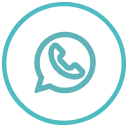
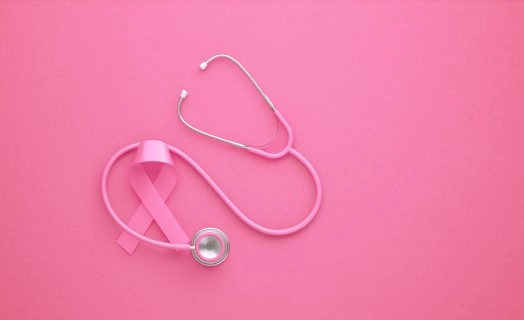

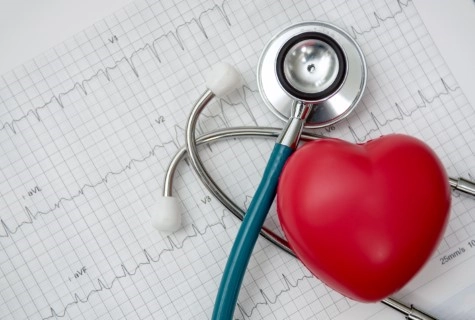


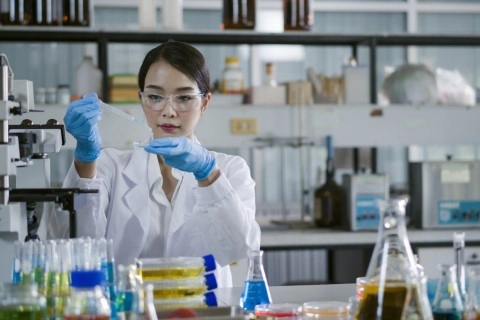

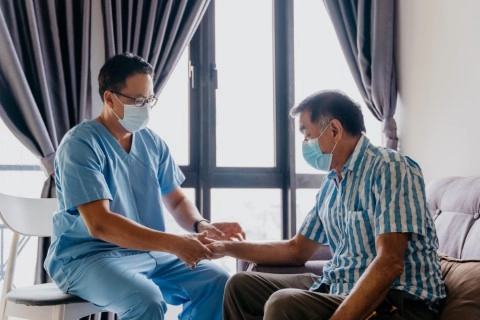
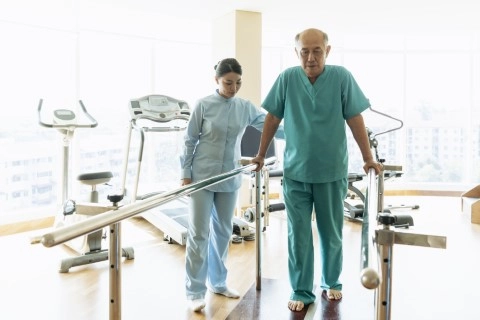
-500x500.webp?sfvrsn=60351b85_7)
.webp?sfvrsn=7ac66b9b_1)







